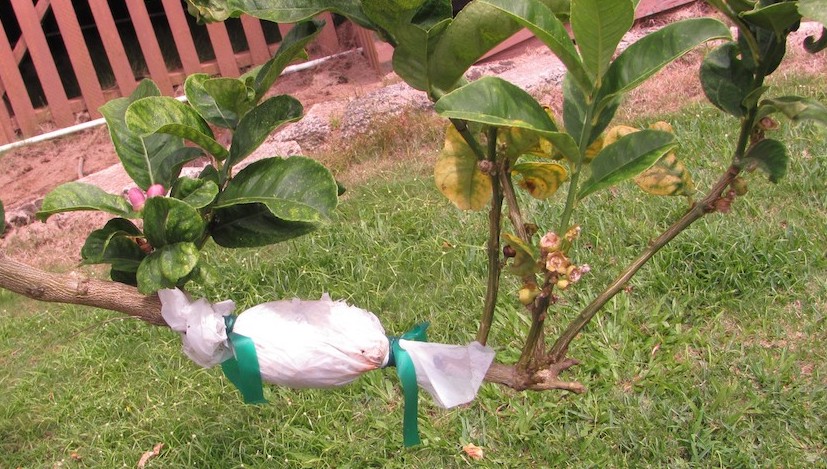(Continued from Part 2. This concludes the article.)
The EU database listing for Salix states as a fungicide it is useful against leaf fungus and powdery mildews[EU]. The recipe for making a Salix solution: “30 L of natural or rain water is brought to simmering in a stainless steel tank with cover, at 80°C infuse 200 g of Salix spp cortex for 2 hours. After cooling down, and filtration with a stainless steel sieve, adjust pH to 6.2 and proceed the dilution by 3 with water. Use within 24 hours to avoid bacterial contamination [EU].” Some recipes refer to the “aerial” part of the plant, this recipe to the “cortex”. In practice, one might just get some pencil size or smaller shoots from a willow tree and chop them up to fit inside where you are performing the extraction. However, never having tried this willow concoction before, a reputable recipe is cited. I have heard from a friend who went to school for botany that in the greenhouses on campus they would place cuttings in buckets along with cuttings of willow branches to enhance the rooting of the cuttings, albeit that was second-hand information. If you do make a Salix based fungicide/rooting solution, I would apply it to the girdling and bud incision wounds via soaking a towel in the solution and tying it to the wounded twig for a few hours, and then use the same solution to wet the soil in the air layering packet.
How to air layer: Cover the incision with moist soil and protect from the elements.
This is the fun part of air layering, where you get to use your imagination and materials on hand to keep freshly wounded twig covered in soil and moist. But before we get to the covering, lets discuss the soil. The most common soil used for air layering (and what I use) is peat (i.e., sphagnum) moss. Peat moss is ideal because it is naturally anti-fungal, and if you buy it wrapped in plastic it is going to contain very little fungal spores, once wet it will hold water. It also provides a “light” growing medium for the roots. Whatever soil you choose, you want a soil that will not promote fungal/bacteria growth (so don’t use your compost) and that is “light” (so don’t use soils with a high clay content).
If you have a freshly opened bag of potting mix or peat moss, you should be fine regarding sterility. But for any garden soil or bags of potting mix or peat moss that has been open for weeks, you can heat treat them to sterilize them. Heating up to the boiling temperature of water (212 degree F) will kill basically all organisms and viruses that could negatively affect your air layering. There are numerous methods online describing how to get soil up to this temperature, everything from solar to steam canning equipment. We only need small volumes of soil (like a handful per air layering) so if…
